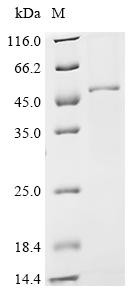Cookie-Einstellungen
Diese Website benutzt Cookies, die für den technischen Betrieb der Website erforderlich sind und stets gesetzt werden. Andere Cookies, die den Komfort bei Benutzung dieser Website erhöhen, der Direktwerbung dienen oder die Interaktion mit anderen Websites und sozialen Netzwerken vereinfachen sollen, werden nur mit Ihrer Zustimmung gesetzt.
Konfiguration
Technisch erforderlich
Diese Cookies sind für die Grundfunktionen des Shops notwendig.
"Alle Cookies ablehnen" Cookie
"Alle Cookies annehmen" Cookie
Ausgewählter Shop
CSRF-Token
Cookie-Einstellungen
FACT-Finder Tracking
Individuelle Preise
Kundenspezifisches Caching
Session
Währungswechsel
Komfortfunktionen
Diese Cookies werden genutzt um das Einkaufserlebnis noch ansprechender zu gestalten, beispielsweise für die Wiedererkennung des Besuchers.
Facebook-Seite in der rechten Blog - Sidebar anzeigen
Merkzettel
Statistik & Tracking
Endgeräteerkennung
Kauf- und Surfverhalten mit Google Tag Manager
Partnerprogramm

Bei Fragen nutzen Sie gerne unser Kontaktformular.
Bestellen Sie auch per E-Mail: info@biomol.com
Größere Menge gewünscht? Bulk-Anfrage
Bestellen Sie auch per E-Mail: info@biomol.com
Größere Menge gewünscht? Bulk-Anfrage
Organism: Mus musculus (Mouse). Source: E.coli. Expression Region: 835-1170aa. Protein Length:... mehr
Produktinformationen "Double-stranded RNA-specific adenosine deaminase (Adar), partial, mouse, recombinant"
Organism: Mus musculus (Mouse). Source: E.coli. Expression Region: 835-1170aa. Protein Length: Partial. Tag Info: C-terminal 6xHis-tagged. Target Protein Sequence: SLGTGNRCVK GDSLSLKGET VNDCHAEIIS RRGFIRFLYS ELMKYNHHTA KNSIFELARG GEKLQIKKTV SFHLYISTAP CGDGALFDKS CSDRAVESTE SRHYPVFENP KQGKLRTKVE NGEGTIPVES SDIVPTWDGI RLGERLRTMS CSDKILRWNV LGLQGALLTH FLQPVYLKSV TLGYLFSQGH LTRAICCRVT RDGKAFEDGL RYPFIVNHPK VGRVSVYDSK RQSGKTKETS VNWCMADGYD LEILDGTRGT VDGPGKELSR VSKKNIFLQF KKLCSFRARR DLLQLSYGEA KKAARDYDLA KNYFKKSLRD MGYGNWISKP QEEKNF. Purity: Greater than 95% as determined by SDS-PAGE. Endotoxin: n/a. Biological Activity: n/a. Form: Liquid or Lyophilized powder. Buffer: If the delivery form is liquid, the default storage buffer is Tris/PBS-based buffer, 5%-50% glycerol. If the delivery form is lyophilized powder, the buffer before lyophilization is Tris/PBS-based buffer, 6% Trehalose, pH 8.0. Reconstitution: We recommend that this vial be briefly centrifuged prior to opening to bring the contents to the bottom. Please reconstitute protein in deionized sterile water to a concentration of 0.1-1.0 mg/mL.We recommend to add 5-50% of glycerol (final concentration) and aliquot for long-term storage at -20 °C/-80 °C. Our default final concentration of glycerol is 50%. Customers could use it as reference. Storage: The shelf life is related to many factors, storage state, buffer ingredients, storage temperature and the stability of the protein itself. Generally, the shelf life of liquid form is 6 months at -20 °C/-80 °C. The shelf life of lyophilized form is 12 months at -20 °C/-80 °C. Notes: Repeated freezing and thawing is not recommended. Store working aliquots at 4 °C for up to one week. Relevance: Catalyzes the hydrolytic deamination of adenosine to inosine in double-stranded RNA (dsRNA) referred to as A-to-I RNA editing. This may affect gene expression and function in a number of ways that include mRNA translation by changing codons and hence the amino acid sequence of proteins since the translational machinery read the inosine as a guanosine, pre-mRNA splicing by altering splice site recognition sequences, RNA stability by changing sequences involved in nuclease recognition, genetic stability in the case of RNA virus genomes by changing sequences during viral RNA replication, and RNA structure-dependent activities such as microRNA production or targeting or protein-RNA interactions. Can edit both viral and cellular RNAs and can edit RNAs at multiple sites (hyper-editing) or at specific sites (site-specific editing). Its cellular RNA substrates include: bladder cancer-associated protein (BLCAP), neurotransmitter receptors for glutamate (GRIA2) and serotonin (HTR2C) and GABA receptor (GABRA3). Site-specific RNA editing of transcripts encoding these proteins results in amino acid substitutions which consequently alters their functional activities. Exhibits low-level editing at the GRIA2 Q/R site, but edits efficiently at the R/G site and HOTSPOT1. Does not affect polyomavirus replication but provides protection against virus-induced cytopathic effects. Essential for embryonic development and cell survival and plays a critical role in the maintenance of hematopoietic stem cells. Reference: n/a. Function: nan
| Schlagworte: | Adar, DRADA, EC=3.5.4.37, RNA adenosine deaminase 1, Double-stranded RNA-specific adenosine deaminase, Recombinant Mouse Double-stranded RNA-specific adenosine deaminase (Adar), partial |
| Hersteller: | Cusabio |
| Hersteller-Nr: | EP859990MO |
Eigenschaften
| Anwendung: | Activity not tested |
| Konjugat: | No |
| Wirt: | E.coli |
| Spezies-Reaktivität: | mouse |
| MW: | 44.9 kD |
| Reinheit: | >95% (SDS-PAGE) |
Datenbank Information
| KEGG ID : | K12968 | Passende Produkte |
| UniProt ID : | Q99MU3 | Passende Produkte |
| Gene ID : | GeneID 56417 | Passende Produkte |
Handhabung & Sicherheit
| Lagerung: | -20°C |
| Versand: | +4°C (International: +4°C) |
Achtung
Nur für Forschungszwecke und Laboruntersuchungen: Nicht für die Anwendung im oder am Menschen!
Nur für Forschungszwecke und Laboruntersuchungen: Nicht für die Anwendung im oder am Menschen!
Hier kriegen Sie ein Zertifikat
Loggen Sie sich ein oder registrieren Sie sich, um Analysenzertifikate anzufordern.
Bewertungen lesen, schreiben und diskutieren... mehr
Kundenbewertungen für "Double-stranded RNA-specific adenosine deaminase (Adar), partial, mouse, recombinant"
Bewertung schreiben
Loggen Sie sich ein oder registrieren Sie sich, um eine Produktbewertung abzugeben.
Zuletzt angesehen

